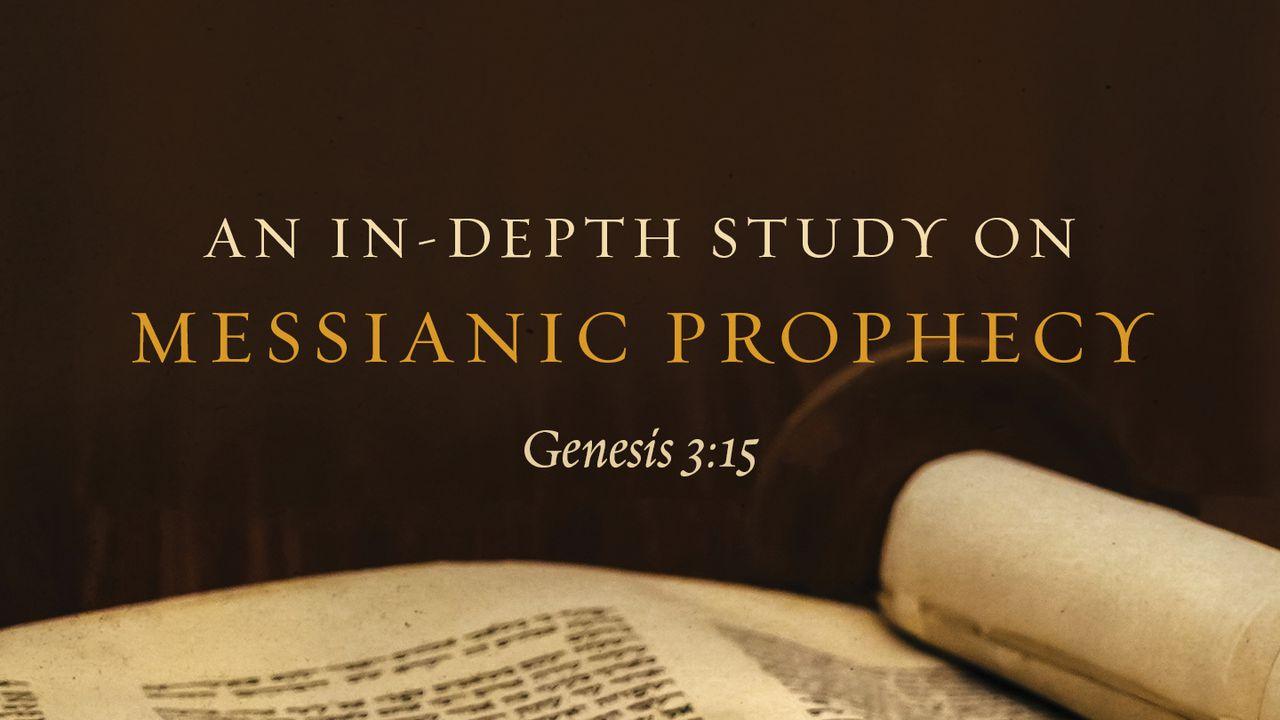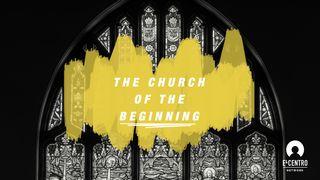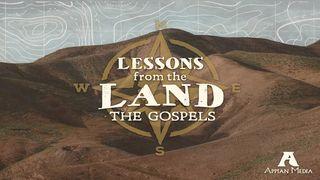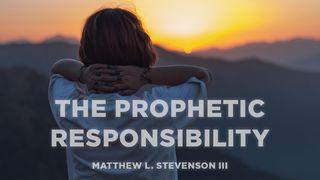An In-Depth Study On Messianic ProphecySample

GENESIS 3:15 IN ITS LITERARY CONTEXT
Context is king. This axiom expresses a foundational rule in biblical interpretation. This axiom is crucial for interpreting a verse that has all the appearance of being programmatic for the ensuing plot of the book as a whole. John Sailhamer calls attention to both the enigmatic and programmatic nature of this verse when he writes,
In light of the fact that similar programmatic discourses are strategically placed throughout the remainder of the book, it seems probable that the author intended these words also to be read as programmatic and foundational to the plot and characterization of the book as a whole. . . . Verse 15 thus contains a puzzling yet centrally important question: Who is the “seed” of the woman? The purpose of this verse is not to answer that question but to raise it. The remainder of the book of Genesis and the Pentateuch gives the author’s answer.
The verse anticipates hostility between the serpent and the woman, and between his seed and hers. It is little wonder, therefore, that “seed” becomes a keyword in the book of Genesis, and an ensuing conflict (at times mortal) between a chosen and rejected seed becomes its plot. It makes good exegetical sense, therefore, to allow the book to shine interpretive light on the literal sense of this challenging verse.
GENESIS 1–11 AS A PLOT SETTER
In order to grasp the programmatic nature of Gn 3:15 it is essential to understand how Gn 1–11 functions as the introduction to the Torah. Genesis 1–11 introduces all the key themes in the remainder of the Torah story, and serves as the needed background for understanding God’s election of Abram and, in him, the nation of Israel. Genesis 1:28 contains all the essential elements of God’s promise and purposes for the patriarchs: blessing, seed, and land.
God blessed them, and God said to them, “Be fruitful, multiply, fill the earth, and subdue it. Rule the fish of the sea, the birds of the sky, and every creature that crawls on the earth.” (Gn 1:28)
God blessed them, and henceforth desires to bless all the families of the earth (Gn 12:3). God commanded them to be fruitful, a command that anticipated God’s promise to multiply Abraham’s seed (Gn 17:2,6). God also commanded the first couple to “subdue the earth.” The word “earth” in Hebrew is the same word used for “land” (cf. Gn 2:11,13; 4:16) and “subdue” in other contexts means “to conquer” (Nm 32:22,29; Jos 18:1), an obvious allusion to Israel’s mission to conquer the promised land.
When we look more broadly, we see other themes and patterns in Gn 1–11 that are programmatic for Israel’s story as told in the Torah as well as the former Prophets. God prepares a special place (land) for the first man, and graciously brings him into it (Gn 2:7-16). Life in this special place is contingent on his obedience to God’s commandments (Gn 2:16-17). Although Adam and Eve were commanded to subdue the land and rule over its creatures, they fell prey to the serpent’s temptations and disobeyed God’s commandments.
Disobedience brought curses (Gn 3:14,17; 4:11; 5:29; 9:25), exile from the garden in Eden (Gn 3:23-24; cf. 2:8) as well as the land of Eden (Gn 4:16), and death (Gn 2:17; 3:19; 5:5,8,11,14,17,20,27,31; 7:22; 9:29; 11:28,32). Adam’s posterity eventually found themselves in Babylon (Gn 11:1-9) from whence God chose and called Abram back to a specially prepared land.
All the key themes of Israel’s story are present in this story: blessing (Gn 49; Dt 33), a special land (Gn 15:18), seed, commandments (Ex 20:1-17), temptations to forsake the Lord’s commandments by those who share this special land (Dt 7:1- 4), disobedience and curses (Dt 28:16-19), exile (Lv 26:33; Dt 4:26-28; Dt 30:1; 2Kg 25), and death. Adam and Eve’s disobedience in Gn 3 became the catalyst of a plot embracing all humanity, a plot that ultimately found resolution through the victory of a particular seed (collective and singular) from Adam’s line (Gn 3:15; 4:25; 9:26-27; 11:10) over hostile enemies (Gn 9:25; 12:3; 22:17; 24:60; 49:8; Nm 24:17-19).
In light of the relationship of Gn 1–11 to the rest of the Torah story, it seems to be a rather impoverished interpretation to suggest that Gn 3:15 is there to simply tell a “just-so story” of why the snake crawls or a never-ending “ying-yang” struggle between people and snakes or the forces of evil. Genesis 3:15 must be grasped as the acorn out of which the entire story grows, a story whose outcome is the final triumph of Adam’s seed, through Abraham, Isaac, Jacob, and Judah, over the forces of evil.
LOOK FOR THE FAMILY RESEMBLANCE
To understand the way in which the author connects the various characters and stories together into a single narrative, it is essential to note how the “deeds of the fathers are a sign to the sons,” or as Alexander states,
[T]he members of the family line often resemble each other. This is in keeping with the observation, made above, that the concept of ‘seed’ implies a resemblance between the progenitor and the progeny.
The author not only presents Adam, Eve, and the serpent as historical figures, he also presents them as representative figures, carefully and systematically noting ways in which subsequent characters find their meaning and their destiny in the former. Who is the serpent? Who is/are the seed of the serpent? Who is/are the seed of the woman? What meaning do each of these figures have in the larger story? Literary parallels in Gn 1–11 are crucial for answering these questions and for discerning the grammatical-historical meaning of Gn 3:15.
Scripture
About this Plan

Does Jesus exist only in the New Testament? Can we confidently say Jesus was the messiah spoken of in the Old Testament? This 5 day, in depth study will plunge into Messianic Prophecy in the Old Testament with Gen. 3:15. Learn how to find Jesus in the Old Testament!
More
Related plans

Seeing Jesus In The Jewish Feasts

Unlocking Scripture With Greek Word Study

Rabboni

The Church Of The Beginning

Lessons From the Land: The Gospels

The Prophetic Responsibility

From Passover to Pentecost

Rivers Of Revelation

Elijah. Man of Courage, Man of Faith, Man of God.
